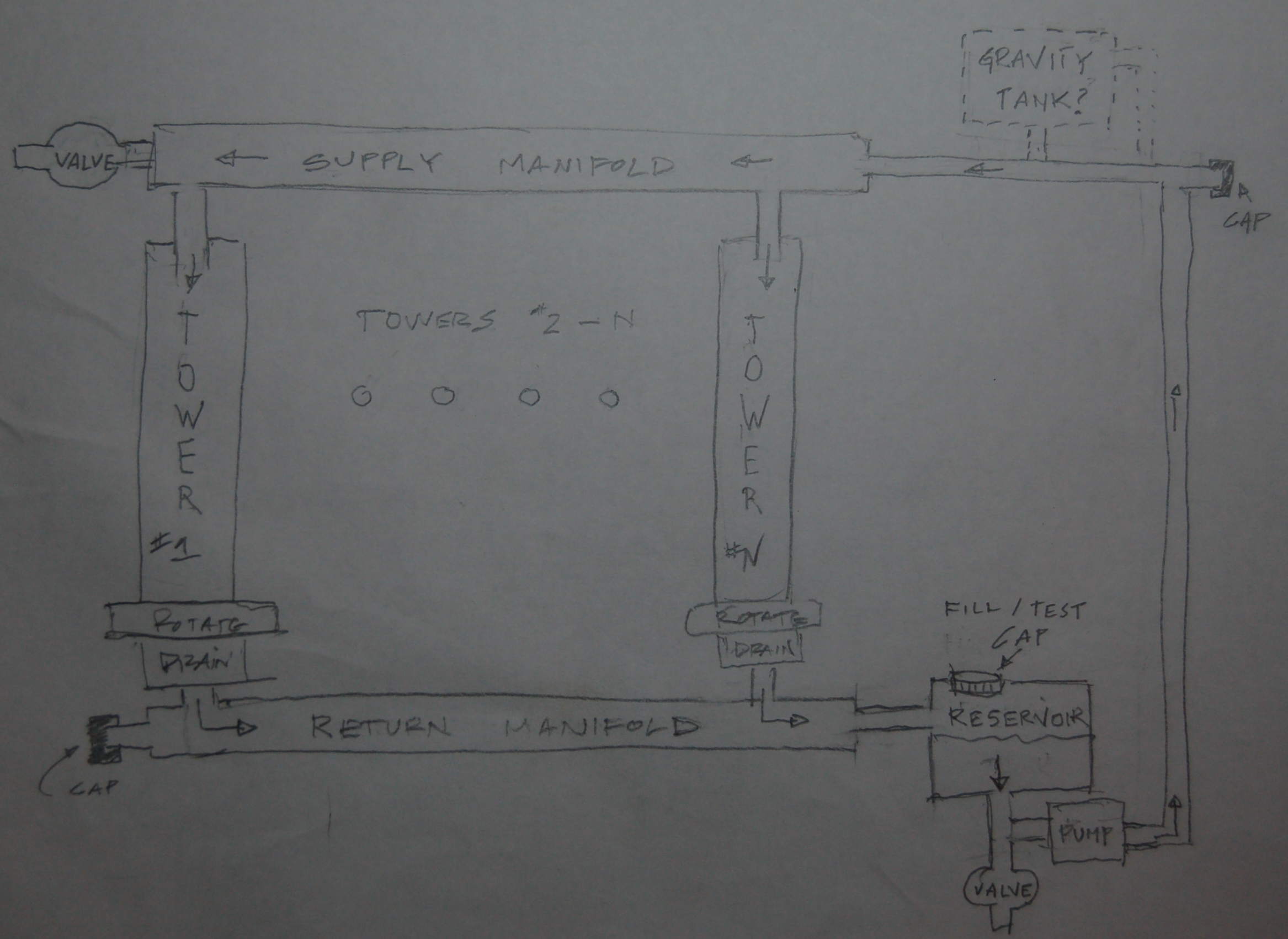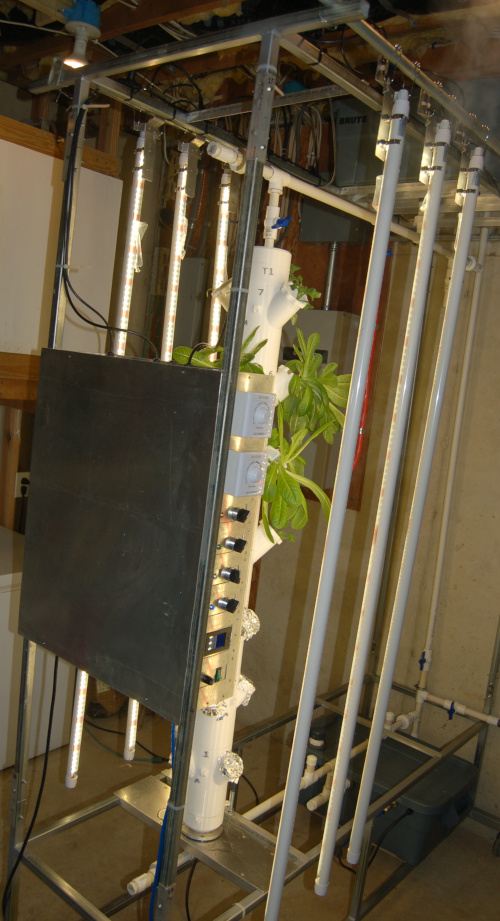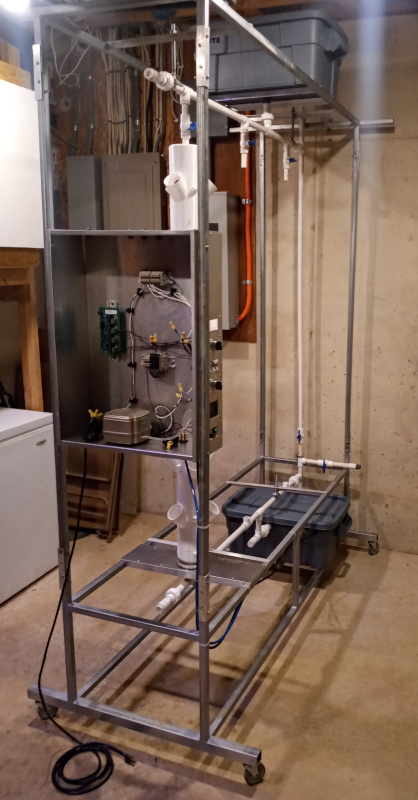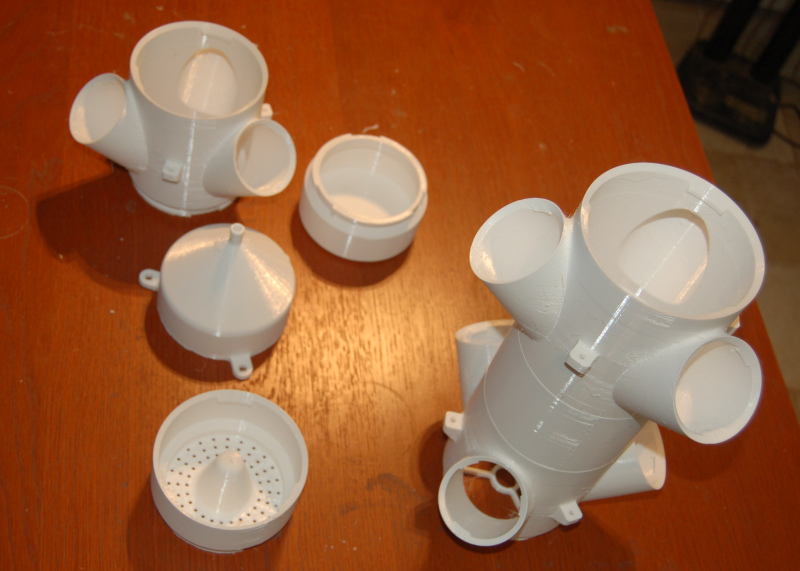Hydroponics System: Master Design
This is the first version of the Master Design for the hydroponics system. This shows all the major components, and how they relate to one another.
Component Descriptions
- Reservoir Tank. This tank contains the nutrient solution for the plants. It has a drain valve so it can be periodically emptied.
- Pump. This machine moves the nutrient solution from the reservoir tank, through the supply line pipe, into the Supply Manifold
- Supply Manifold. This distributes the nutrient solution evenly to each one of the Grow Towers.
- Grow Tower. This assembly holds some number of plants, and evenly distributes the nutrient solution to each plant in the tower. The “rotate” sub-assembly provides a way to spin the tower around in order to easily access each plant. The “drain” sub-assembly collects the nutrient solution as it trickles down the tower column, and deposits the solution into the Return Manifold.
- Return Manifold. This component collects the draining nutrient solution from each of the towers and deposits it back into the Reservoir Tank.
- Gravity Tank. This tank would hold nutrient solution. It would be loaded by the pump, and drain by gravity into the supply manifold. If the pump breaks, this tank offers a way to manually run the system until the pump is replaced. It’s a fail-safe. Do we need it? I’m not sure yet, hence the dotted lines.
You can see that we have five – possibly six if we include the Gravity Tank – different types of sub-assembly to design and build. We’ll devote a separate Detail Design document to each of those sub-assemblies, and once those detail-design documents are prepared, it’ll be time to begin construction.
Commentary
There are a few interesting things to note about this diagram:
- It’s not pretty. I sketched this ratty diagram on a piece of paper. It took me about 5 minutes to do it, and another 5 minutes to make the first hen-scratch legible and neat enough so that you could read it. I invested the minimum amount of time necessary to capture the relevant information, and put it into a form that communicates effectively
- It captures the right information. It identifies the main components. It defines the function of each component. It shows how the components connect / relate to one another, and finally, it shows the flow of action of the system.
- It shows areas of uncertainty; there may be some components that we know about, but aren’t yet sure if we want them in the final design. Look at the component labelled “Gravity Tank?” with the dotted lines. That component might get added to the system later, but I’m not sure about it yet, so I annotated the design with a place-holder.
- It’s incomplete. One missing element is a fill cap for the gravity tank. If the pump fails, how do I get nutrient solution into the gravity tank? Did you spot that omission?
- It’s a Teamwork Tool. Since I took the trouble to draw and present this picture, you may have noticed some other problems with this design. If we didn’t have this picture and narrative to work with, how would I know what you’re thinking? Without your input, my design would only be as good as I can make it, and not nearly as good as we can make it.
Share this content:




Post Comment